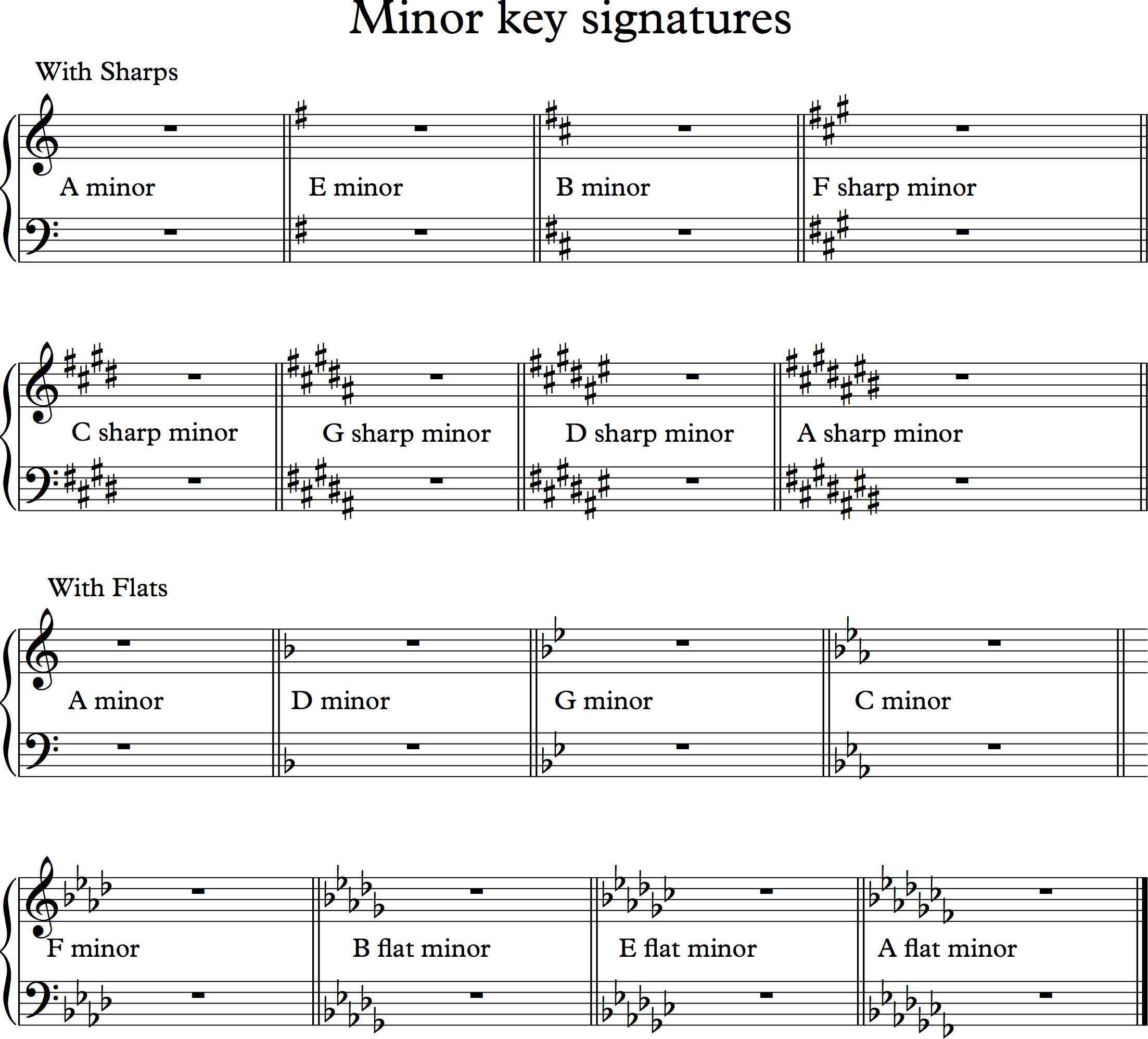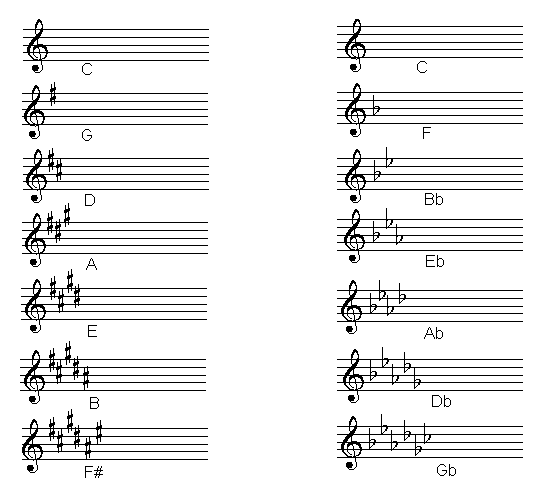
This interval is in the dominant chord built on the 5th degree ( G7, that is G B D F) In the key of C, there's a tritone interval between B and F (6 half-steps, the most dissonant interval) That's surprising! Why keys are only major and minors? What about the other modes?Īs the minor key is built on the 6th degree of a major key, we could be tempted to include keys built on the other degrees: Mixolydian on the 5th degree, Lydian on the 4th, and all theĪctually, major and minor keys have a unique characteristic not present in any other mode: tritone resolution. If we take two keys, with the second one semitone below the first, the sum of sharps in the first key and the flats in the second key is always 7 Interesting fact about sharps and flats in the table aboveīy looking at the keys table above, we can derive an interesting insight: Start with them.Ĭb and B have the same pitches, but they are called with a different name because of the enharmonics.

You don't have to know all these keys.There are certain keys that work best on guitar. You can also see these keys using the Circle of Fifths. Here is a table with all the minor and major keys. Sharpsġ (no sharps and flats) + 7 (sharps) + 7 (flats) = 15 major keysĪs minor keys are relative to major keys, we have 15 minor keys as well. We can have a major key without sharps and flats: C major. Let's count how many keys we can create by adding those sharps and flats. Let's see how many keys actually there are

There are more than 12 keys, because we have to consider also minor keys! This double up our count, and so there are 24 keys. There are 24 keys, we have to include minor keys. Get misled and think that we can build 12 major scales starting from each of As an octave is composed of 12 half-steps (or semitones), it's easy to And it surprising how many wrong answers there exist on the Web. Once you are confident you know all the keys with flats click here to take an online quiz.How Many Keys are there? 12? 24? Or More? if there are 5 Flats in a key signature (B, E, A, D, G) just take the penultimate flat (D flat) and you have the key which is D flat major! Take the quiz One of the easy ways to find out a key with flats is to see what the penultimate flat is.
#All music keys in order how to
Just watch the short video below to learn how to do it. Once you know these two things there is a simple method to help work out all the signatures for any major key. The second thing you need to remember is the same thing as for the sharps and that is that C major has no sharps and no flats. she then proceeded to demonstrate this to me by stamping on a plastic cup! The flats go down 5 notes between each because when you flatten something it goes down. One of my favourite methods of remembering came from a students who said she remembered that the sharps went up 5 notes between each because if you sat on something sharp you would go up quickly. You could also remember to start on B and go up 4 notes each time. Some people remember this with the mnemonicī attle E nds A nd D own G oes C harles' F atherīut to be honest I am not a fan of this because it is too easy to get the last two words muddles and remember Battle Ends And Down Goes Father Charles.

The first thing to remember is the order of the flats which is You only need to remember two things, and if you already know the order of the sharps you can already remember one of them, because the order of the flats is just the order of the sharps backwards! And if you are on this page first, when you get to the sharps page they will just be the flats backwards! Simple method for remembering key signatures with flatsĪs I said on the sharp keys page, this is something that only occurred to me recently.

I have included the key of C Major (no sharps or flats) at the start, just for the sake of completeness, although clearly there is nothing there! so pretty important really!īelow you will find a video that shows you a simple method of remembering all of the major key signatures containing flats.įirst here are all the key signatures of the keys that have flat. Having a good knowledge of music keys helps your sight reading, makes it easier to memorize scales, helps you become better at improvisation and really helps you if you want to become a composer. In fact, no theory is really about passing exams! Learning music theory is about helping inform and improve your playing. Click here if you are looking for help on the key signatures that contain sharps.Īs I say on the sharps keys page, knowing the keys isn't only about passing theory exams. This page helps you remember the keys which contain flats. Remembering key signatures is something that most musicians find difficult to begin with.


 0 kommentar(er)
0 kommentar(er)
